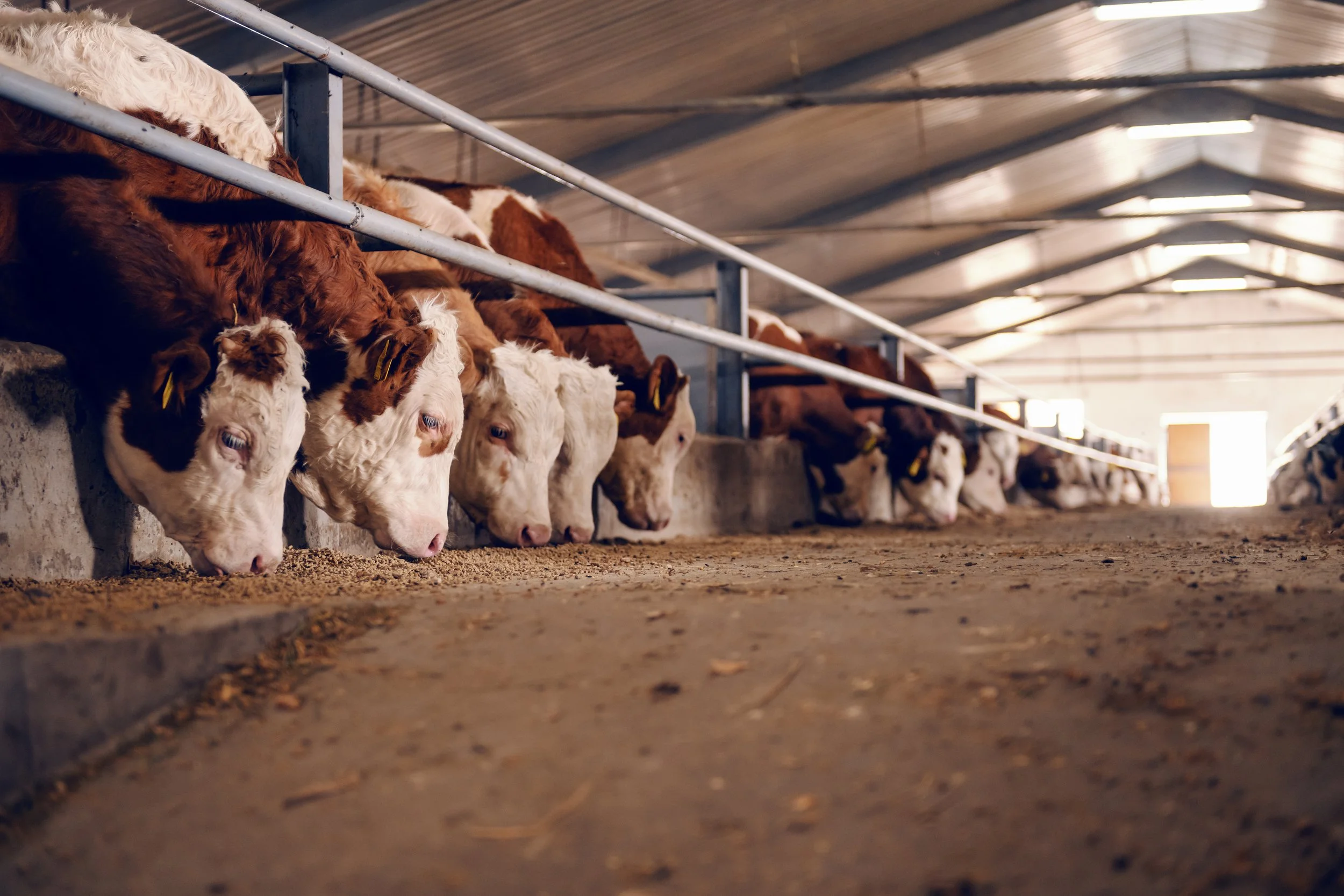VALUE OF BYPRODUCTS
LEATHER & HIDE
Understanding the Process
Converting hides into finished leather products is an ancient yet relatively complex process. Veg tanning and chrome tanning are the two prominent methods used to create finished leather. The process is similar for each, but the resulting product will have a different finish.
Veg Tanning
The oldest type of tanning, known as veg tanning, dates back roughly 8,000 years.
The Egyptians, Babylonians, and the Hebrews started perfecting veg tanning around 400 BCE. To get veg-tanned leather, they used oils, animal brains, animal dung/ urine, alum, and vegetables. Some of those methods are still used today. Modern veg tanneries generally utilize natural tannins from trees, including chestnut, oak, willow, birch, mimosa, and catechu.
Chrome Tanning
In 1958, chrome tanning was invented by the German technologist Friedrich Knapp and Hylten Cavalin from Sweden. However, an American chemist, Augustus Schultz, first patented the chrome tanning process with alkaline chromium (III) sulfate as a tanning agent. Today, chrome tanning accounts for more than 85% of global leather production. (The Leather Dictionary)
The chart below, courtesy of the U.S. EPA, shows the tanning process. (Leather Tanning)
Regardless of the tanning process utilized, tanneries can only accept hides that are pulled, preserved, and palatized properly.
Proper hide pulling is the first step.
While many smaller processors still remove hides by hand, mechanical hide pullers are important in capturing hides free of nicks and cuts.
Fleshing is the next step in preparing a hide for tanning. Most commercial tanneries require that the hides be properly fleshed before arriving at their dock. Commercial fleshing machines can run upward of $60,000.
Here are some sources for purchasing those machines.
Steps In the Tanning Process
Pretanning
(Beamhouse operations)
Soaking: The preserved raw hides regain their normal water contents. Dirt, manure, blood, preservatives (sodium chloride, bactericides), etc. are removed.
Fleshing and trimming: Extraneous tissue is removed. Unhairing is done by chemical dissolution of the hair and epidermis with an alkaline medium of sulfide and lime. After skinning at the slaughterhouse, the hide appears to contain excessive meat, and fleshing usually precedes unhairing and liming.
Bating: The unhaired, fleshed, and alkaline hides are neutralized (deliming) with acid ammonium salts and treated with enzymes similar to those found in the digestive system to remove hair remnants and degrade proteins. During this process, hair roots and pigments are removed. The hides become somewhat softer by this enzyme treatment.
Pickling: Pickling increases the acidity of the hide to a pH of 3, enabling chromium tannins to enter the hide. Salts are added to prevent the hide from swelling. For preservation purposes, 0.03 - 2 weight percent of fungicides and bactericides are applied.
Tanning
Chrome tanning: After pickling, when the pH is low, chromium salts (Cr3+) are added. To fixate the chromium, the pH is slowly increased by adding a base. The chromium tanning process is based on the cross-linkage of chromium ions with free carboxyl groups in the collagen. It makes the hide resistant to bacteria and high temperatures. The chromium-tanned hide contains about 2-3 dry weight percent of Cr3+. Wetblue, i.e., the rawhide after the chrome-tanning process, has about 40 percent of dry matter.
Vegetable tanning: Vegetable tanning is usually accomplished in a series of vats (first, the rocker-section vats in which the liquor is agitated, and second, the lay-away vats without agitation) with increasing concentrations of tanning liquor. Vegetable tannins are polyphenolic compounds of two types: hydrolyzable tannins (i.e., chestnut and myrobalan), which are derivatives of pyrogallols, and condensed tannins (i.e., hemlock and wattle), which are derivatives from catechol. Vegetable tanning probably results from hydrogen bonding of the tanning phenolic groups to the peptide bonds of the protein chains. In some cases, as much as 50% by weight of tannin is incorporated into the hide (Ockermann and Hansen, 1988).
Finishing
Wetblue: Chromium tanned hides are often retanned - during which process the desirable properties of more than one tanning agent are combined - and treated with dye and fat to obtain the proper filling, smoothness and colour. Before actual drying is allowed, the surplus water is removed to make the hides suitable for splitting and shaving. Splitting and shaving is done to obtain the desired thickness of the hide. The most common way of drying is vacuum drying. Cooling water used in this process is usually circulated and is not contaminated.
Crust: The crust that results after retanning and drying, is subjected to a number of finishing operations. The purpose of these operations is to make the hide softer and to mask small mistakes. The hide is treated with an organic solvent or water-based dye and varnish. The finished end product has between 66 and 85 weight percent of dry matter.
A more detailed description of the tanning process is found in the publication “Animal by-product processing” by Ockerman and Hansen, 1988. (UN Food and Agriculture Organization - Tanneries)
Articles & Resources
WEBSITE
Other Half Processing
Other Half Processing works directly with regenerative farmers/ranchers and processors to verify, trace, aggregate and buy hides and other meat processing byproducts. We sell raw and finished products to apparel, food and pet sector companies. Core to our model is transparent and fair pricing and economic returns - to producers and other supply chain partners alike - which we believe is essential for a "regenerative" market claim.
WEBINAR
What It Takes to Turn Hides Into Leather Roundtable
Independent meat processors are increasingly searching for ways to capture value from hides currently being sent to landfills or otherwise destroyed.
During our one-hour online roundtable discussion on What it Takes to Turn Hides Into Leather. Flower Hill Institute Regional Directors Dave Carter and Chris Roper were be joined by two national experts in the hide tanning and leather marketing field, Mark Kleinschmit, Co-Founder and CEO of Other Half Processing and Doug Morrison, Technical Consultant, Hermann Oak Leather Company.




